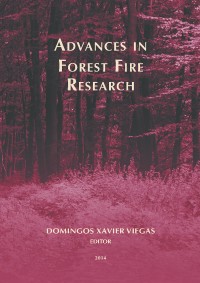Please use this identifier to cite or link to this item:
https://hdl.handle.net/10316.2/34065| Title: | Experimental study on fire behaviour and soil combustion in the high altitude tropical grasslands | Authors: | Pastor, Elsa Oliveras, I. Planas, E. Manta, M. I. Urquiaga, E. Quintano, J. A. |
Keywords: | grass fires;smouldering combustion;Peruvian Andes;fire sustainability;infrared imagery | Issue Date: | 2014 | Publisher: | Imprensa da Universidade de Coimbra | Journal: | http://hdl.handle.net/10316.2/34013 | Abstract: | Tropical mountain cloud forests (TMCFs) are becoming new fire-prone areas in the Neotropics due to ongoing climate change. TMCFs are increasingly suffering from drought episodes during which fires starting at the puna grasslands that occur immediately above the forest, tend to penetrate into the TMCFs causing irreversible damage. Moreover, when the fire reaches the puna-forest treeline it frequently exhibits smouldering propagation consuming the humic soil layer resulting in large carbon emissions. This paper presents an experimental program set up to study critical conditions that favour fire spread in the puna-TMCFs interface. The objective is twofold: to provide understanding of the threshold environment and fuel conditions allowing sustainable back-fire propagation in puna grasslands when advancing towards the TMCFs and to investigate the onset of smouldering combustion of the humic layers of the puna soil near the TMCFs treeline. The study area was located at tropical Andean puna grasslands at the Cusco region (Southern Peru, bordering Manu National Park). It involved two different locations, one for the ground fire experiments and the other for the grassfire sustainability and behaviour tests. The first site comprised 20 paired ground plots (0.5 m x 0.5 m) which were ignited by a purpose-standardized ignition procedure and monitored by thermocouples during 48 h. The second site was divided in 12 grassland plots (20 m x 5 m) of two different fuel ages. Each grassfire was recorded with video and infrared cameras and witnessed by ground observers to detect fine scale changes in fire activity due to fuel and wind variability. Environmental conditions were constantly monitored in both type of experiments. The ground tests provide novel information about smouldering fires in a real environment, going beyond classic laboratory experimentation. Soil temperatures higher than 100ºC were observed to last for around 20 hours with maximum temperatures around 450 ºC. The surface fires experiments revealed dead fuel load and fuel moisture content thresholds (0.2 kg m-2 and 20% respectively) that would explain back-fire sustainability, reaching those go-fires pseudo-stationary rates of spread of around 0.4-0.6 m min-1. These results will allow a more accurate estimation of the magnitude of the fire impact into the TMCFs ecosystems and help envisaging primary fire management policies and recommendations for the correct use of fire by the Andean indigenous communities. | URI: | https://hdl.handle.net/10316.2/34065 | ISBN: | 978-989-26-0884-6 (PDF) | DOI: | 10.14195/978-989-26-0884-6_23 | Rights: | open access |
| Appears in Collections: | Advances in forest fire research |
Files in This Item:
| File | Description | Size | Format | |
|---|---|---|---|---|
| 978-989-26-0884-6_23.pdf | 1.45 MB | Adobe PDF |  |
Items in DSpace are protected by copyright, with all rights reserved, unless otherwise indicated.
